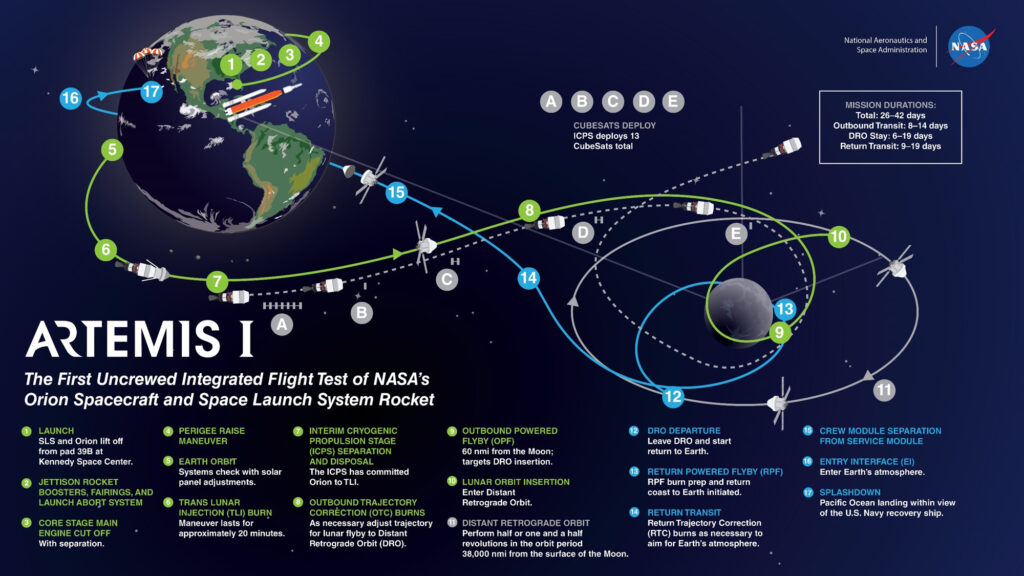
Recently NASA rolled out its Artemis I moon mission to the launch pad for testing at the Kennedy Space Centre in Florida, United States.
What is the Artemis mission?

NASA’s Artemis mission is glorified as the next generation of lunar research and is named after the twin sister of Apollo from Greek mythology.
To land humans on the moon by 2024, and it also plans to land the first woman and first person of color on the moon. To contribute to scientific outcomes and financial functions and inspire a new generation of explorers.
Artemis is also the goddess of the moon. Artemis I is the first of NASA’s deep space exploration systems. It is an uncrewed space mission where the spacecraft will launch on SLS — the most powerful rocket in the world — and travel 2,80,000 miles from the earth for over four to six weeks during the mission.
The Orion spacecraft is going to remain in space without docking to a space station, longer than any ship for astronauts has ever done before.
The SLS rocket has been designed for space missions beyond low-earth orbit. It can carry crew or cargo to the moon and beyond.
Base camp will be formulated on the surface and a gateway in lunar orbit to benefit research by robots and astronauts. It will give astronauts a place to live and work on the moon. It includes a new lunar cabin, a rover, and a mobile home.
What is the mission Sequence?

- SLS and Orion under Artemis I will be launched from the Kennedy Space Centre in Florida, the U.S. in the summer of 2022.
- The spacecraft will deploy the interim cryogenic propulsion stage (ICPS), a liquid oxygen/liquid hydrogen-based propulsion system that will give Orion the thrust needed to leave the earth’s orbit and travel towards the moon. On its way to the moon, Orion will be propelled by a service module provided by the European Space Agency (ESA).
- The spacecraft will communicate with the control centre back on Earth through the deep-space network. It will fly around 100 km above the surface of the moon and use its gravitational pull to propel Orion into an opposite deep orbit around 70,000 km from the moon, where it will stay for approximately six days.
- The exercise aims to collect data and to allow mission controllers to assess the performance of the spacecraft. To re-enter the earth’s atmosphere, Orion will do a close flyby within less than 100 km of the moon’s surface and use both the service module and the moon’s gravity to accelerate back towards the earth. The mission will end with the spacecraft’s ability to return safely to the earth.
we write articles from top news sources of India and international news web portals. Because to understand the topics in a depth we need to read more than one source for the UPSC IAS exam. So every article got credit to PIB, The Hindu, Indian Express, Business Standard,NDTV, CNN, etc. And the conclusion of this article is also available on our youtube channel. Thanks for your love and support and queries and suggestions just mail us at [email protected].
